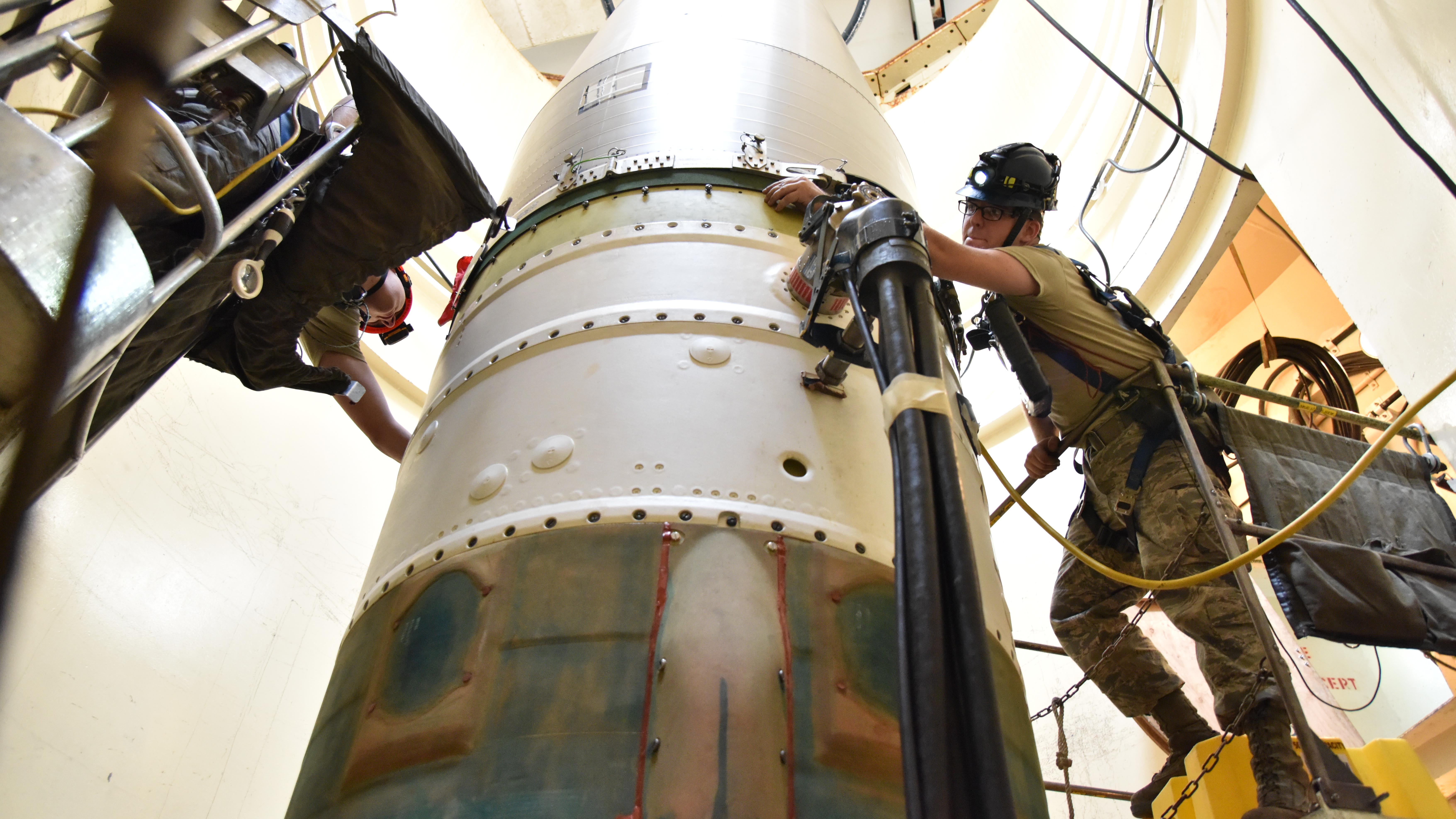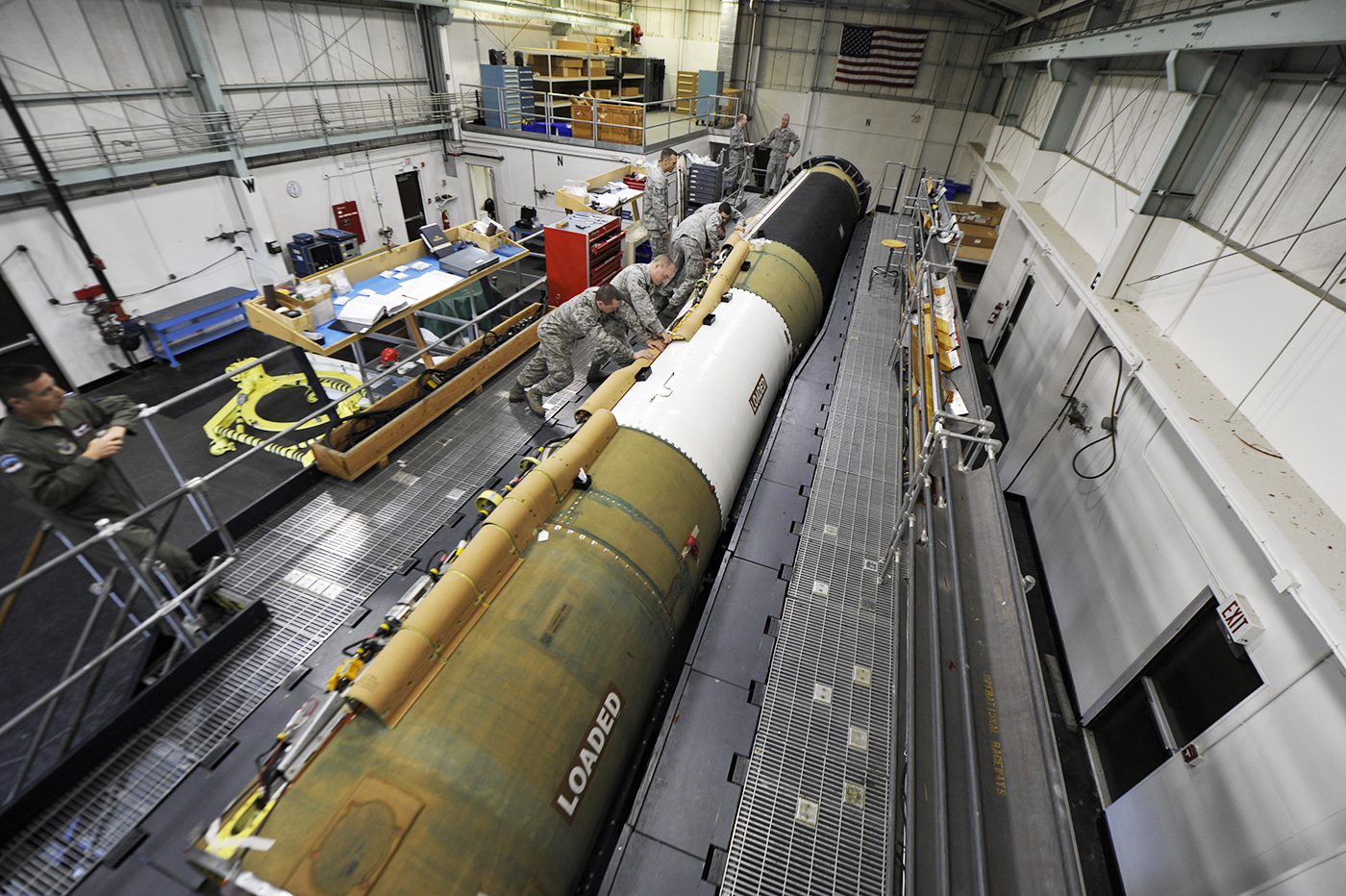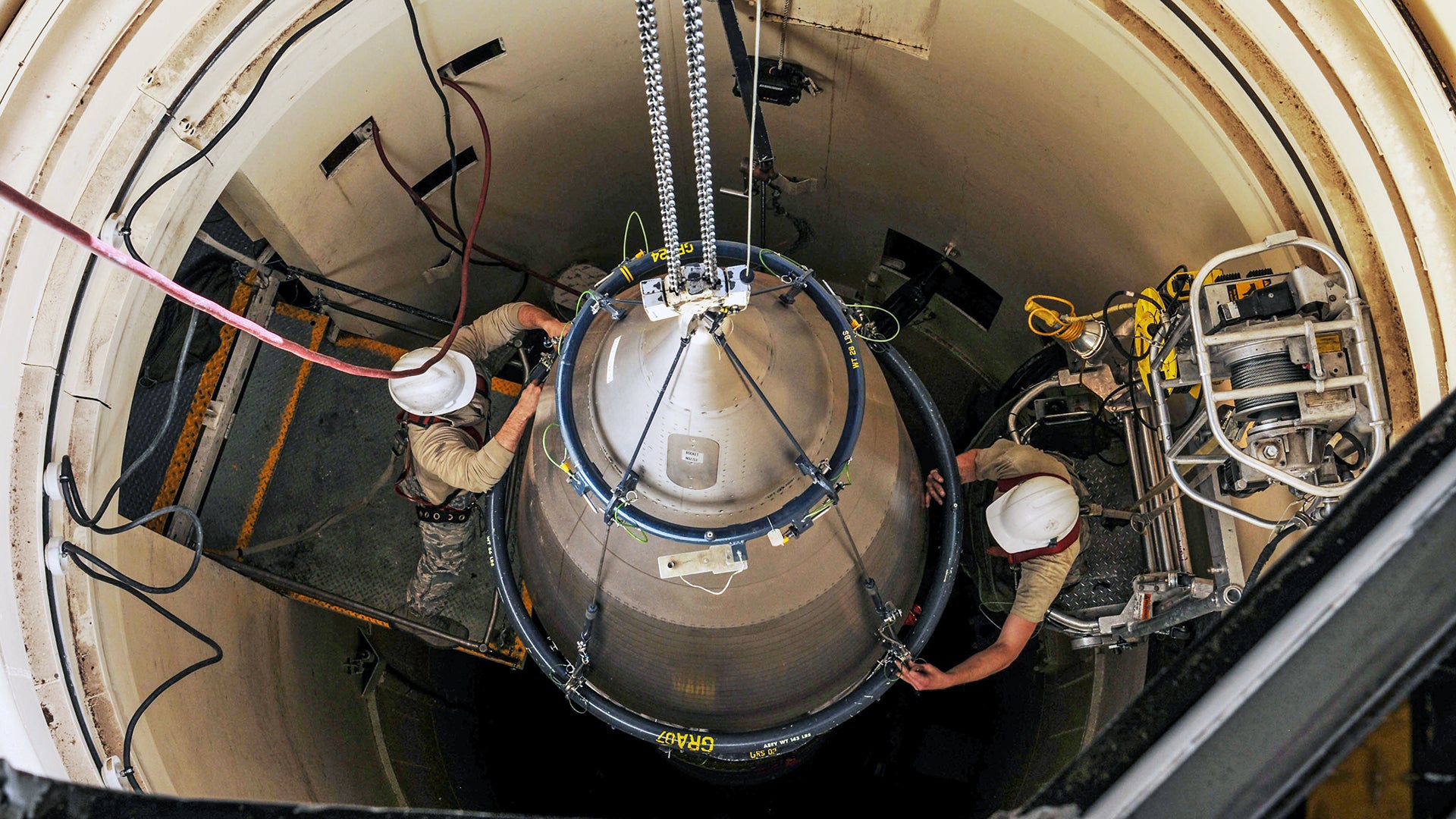The U.S. Air Force continues to move ahead with plans to replace its LGM-30G Minuteman III intercontinental ballistic missiles with the future Ground Based Strategic Deterrent, or GBSD, at a total cost of around $264 billion. But, in the opinion of U.S. voters who responded to a recent poll, it’s not necessarily the right move and most of them think that alternative options should be pursued.
The poll was undertaken by the Federation of American Scientists (FAS) think tank, together with ReThink Media. The sample-set was 800 registered U.S. voters who had been asked for their opinions on America’s intercontinental ballistic missile (ICBM) force last October. It was conducted online and has a confidence interval (similar to a margin of error) of +/- 3.4%. The survey found that 64 percent supported delaying the GBSD, as part of an overall review of that program, while initiating a service-life extension effort for the current Minuteman III missiles. Meanwhile, 60 percent supported one of any various “alternative policies” to deploying the future GBSDs.

The idea of a service-life extension for the Minuteman III ICBMs, as an alternative to the GBSD, received support from 30 percent of the voters polled. Meanwhile, 26 percent of those questioned supported the complete replacement of the Minuteman III, 20 percent supported the elimination of U.S. ICBMs altogether, and 10 percent opted for eliminating all nuclear weapons from the U.S. inventory
The poll included an oversampling of 200 voters in Colorado, Montana, North Dakota, Nebraska, and Wyoming, where intercontinental ballistic missiles (ICBMs) are currently based. These are the “nuclear sponge” states, accommodating the missile fields whose job it is to suck up enemy warheads that could potentially be used on other targets and require the enemy — Russia — to invest heavily into the ability to neuter America’s ICBM force. They also offer a static nuclear strike option that can be activated and deployed against targets around the globe quickly.
The GBSD, also known as the LGM-182A, is currently in the early developmental phase, with Northrop Grumman having received the engineering, manufacturing, and development contract last September. The program calls for the replacement of the Minuteman IIIs with more than 650 new ICBMs, with the first new missiles expected to be deployed from 2029.
We don’t know a great deal about exactly how the GBSD will improve on the existing Minuteman III, but among the advances, the new missile is supposed to offer are the Mk 21A reentry vehicle, which will carry a W87-1 nuclear warhead, both of which you can read more about in detail here.

Importantly, Defense News
points out that the question regarding GBSD included one particular piece of information that may have influenced the respondents’ answers. This was the statement that the contract “is being awarded to a single company, which is highly unusual because a lack of competition generally means that program costs increase significantly.” This reflects the fact that Boeing left the competition in 2019, in reaction to its rival Northrop Grumman’s acquisition of rocket motor manufacturer Orbital ATK, providing what Boeing thought was an unfair advantage. As a result, Northrop Grumman was left as the sole bidder.

The Pentagon has argued that the Minuteman III, which first became operational in the early 1970s, is now too old to be further upgraded in a cost-effective manner and that the GBSD needs to be pursued as an essential part of the U.S. defense infrastructure. Indeed, the new administration under President Joe Biden has already made moves committing itself to the primacy of the nuclear triad itself — ICBMs, nuclear-capable Air Force bombers, and submarine-launched ballistic missiles. Biden’s choice for deputy defense secretary, Kathleen H. Hicks, who will be responsible for nuclear modernization decisions, told lawmakers during a February 2 confirmation hearing that she is committed to all three legs of the nuclear triad.
“The triad has been… the bedrock of our nuclear deterrent,” Hicks said. “And I think it must be modernized in order to be safe, secure, and credible. I don’t think we should be risking the modernization of our deterrent.”

However, the enormous costs associated with the U.S. government’s overarching nuclear modernization program — which, beyond GBSD, also includes the Air Force’s future B-21 Raider stealth bomber, Long-Range Stand-Off missile, and B61-12 nuclear gravity bomb, as well as the U.S. Navy’s hugely expensive Columbia class nuclear-powered ballistic missile submarine (SSBN), among others — are sure to be a central point in the next Nuclear Posture Review, which President Joe Biden’s Administration will no doubt start work on soon. With that in mind, the future of the nuclear triad could still be up for discussion.
There have in the past been attempts to challenge GBSD, including a proposal last summer to redirect $1 billion from the program to a pandemic preparedness fund. That plan was defeated by a significant majority within the House Armed Services Committee.
“There’s a reason why a majority of poll respondents supported alternative policies to the GBSD, and it’s the same reason why a growing number of top military and civilian officials are openly questioning the program today: These missiles no longer play a role in addressing the most important security challenges of our time,” Matt Korda, one of the pollsters for the FAS, said. “Is this truly the best investment in our collective safety that we could be making right now? Our survey results suggest the opposite.”
On a military level, the arguments against ICBMs are many-fold and are something that The War Zone has discussed previously. The aforementioned “nuclear sponge” argument posits that Colorado, Montana, North Dakota, Nebraska, and Wyoming would soak up hundreds of enemy warheads during a conflict, reducing the ability of the enemy to strike elsewhere. While this might save the United States from direct attacks on a number of secondary targets in populated areas, the effects of hundreds of thermonuclear weapons detonating over the central part of the country would be cataclysmic, regardless.
Nevertheless, the idea of a “nuclear sponge” has proven pervasive. For example, then-Secretary of Defense James Mattis, speaking back in 2017, referred to it explicitly when he visited U.S. Navy submariners at Naval Base Kitsap in Washington State. “The ICBMs, because an enemy would have to shoot so much to take them out, you know because they’re are dug in underground, it’s going to soak up a lot.” He added that “I think we’re going to keep all three legs of the deterrent.”

It has also been argued that ICBMs serve as “insurance policy” against the other two legs of the triad experiencing technical failure or being knocked out before they can launch their deadly payloads. However, the second-strike deterrent relies primarily on submarines, not on ICBMs, making such an argument questionable at best.
Ultimately, compared to ballistic missile submarines, or even to Chinese or Russian road-mobile systems, silo-based ICBMs are far less survivable. Meanwhile, the ground-based leg of the triad lacks the flexibility of the nuclear bomber leg, which can offer a tailored response, can be deployed as a show of force when required, and is recallable.
The specific doctrine behind the ICBM force is almost exclusively focused on deterring near-peer nuclear states, such as Russia and China, as well. Meanwhile, the ICBMs themselves are not presently postured to hit anything. Instead, they are all targeted, by default, out to sea, as a failsafe against accidental launches that could trigger a nuclear war. Despite this, a launch alone could still potentially start a nuclear exchange, especially during a time of heightened tensions.
The last Nuclear Posture Review, in 2018, also pointed to the traditional nuclear triad as being too slow and inflexible to actually deter an opponent. Still, it called for work on GBSD to continue, alongside other nuclear modernization efforts, including the B-21 bomber, the B61-12 nuclear bomb, and the LRSO cruise missile.

Although the New START treaty, the premier nuclear arms reduction agreement between the U.S. and Russia, has recently been extended for another five years, should it expire at the end of that period, giving up the ICBM force could be a massive negotiating chip to persuade Russia to give up similar capabilities, as well as others that are exotic in nature and hard to outlaw under existing treaty frameworks.
The money saved in axing the GBSD could, moreover, be invested elsewhere, significantly overhauling other areas of the U.S. military, whether related to nuclear deterrence or otherwise. The new Columbia class SSBNs also don’t come cheap, with concerns frequently voiced about the funding needed to keep that program on track. Last year, the presidential budget put an estimated cost of $14 billion on the first Columbia class submarine, with total procurement costs for all 12 SSBNs at $110 billion.
What is more, removing the ICBM force would also free up more “deployed warheads,” as they are defined under New START, permitting additional ballistic missile submarines and bombers to be deployed.
There is a potential, however, for the GBSD to become more flexible in the future, with thought already being given to potentially integrating new kinds of capabilities that are absent from the Minuteman III. In particular, the Air Force is known to have been researching what it might take to develop a nuclear-armed hypersonic boost-glide vehicle with a range equivalent to a traditional ICBM. One option would be to place such a vehicle on top of the GBSD, which might change the discussion around how ICBMs fit into the nuclear triad.
The debate surrounding modernizing America’s ICBM force isn’t an all or nothing proposition, either. Significantly reducing the number of new ICBMs that will replace the Minuteman III inventory is a compromise offer, albeit one with somewhat diminishing returns.
This latest poll suggests that a majority of U.S. voters have, at least, reservations about the replacement of existing ICBMs with the GBSD. Still, it remains to be seen if the program will be reassessed under the next Nuclear Policy Review, or whether the Pentagon will remain wedded to its nuclear triad under the still very fresh Biden Administration.
Contact the author: thomas@thedrive.com
